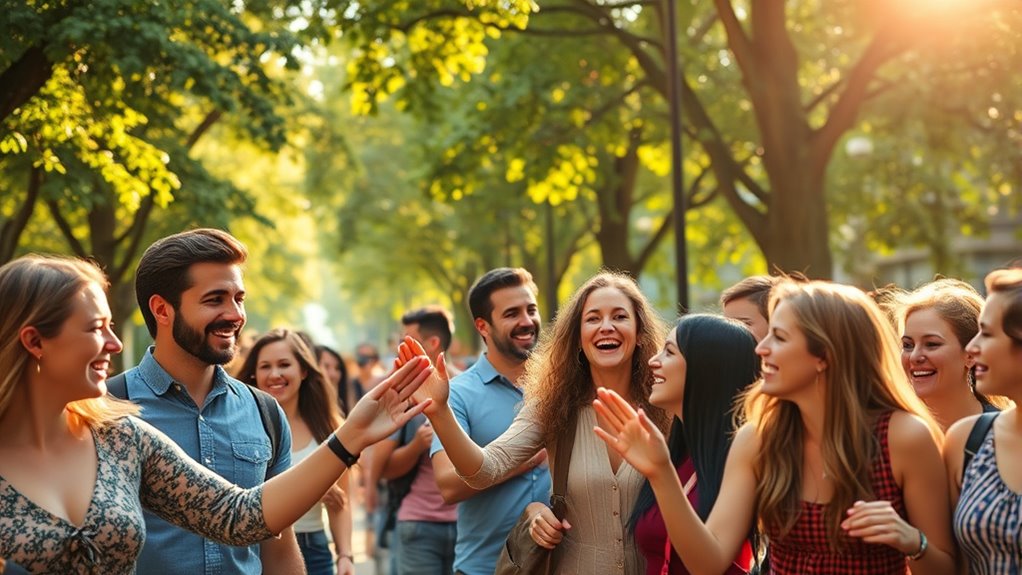Positive contagion spreads through social networks when acts of kindness and genuine emotions ripple from one person to another, like a contagious virus. Your kindness can inspire others through social influence, mirror behavior, and social mimicry, creating a chain reaction. Digital platforms amplify this effect globally, encouraging shared stories and emotional resonance. By understanding these mechanisms, you can help foster a community where kindness naturally spreads. Discover how small actions can ignite a powerful wave of positivity.
Key Takeaways
- Emotions and acts of kindness spread like viruses through social networks via emotional contagion and mirror neuron activity.
- Repeated, genuine acts of kindness strengthen social bonds and inspire others to imitate and continue the chain.
- Digital platforms amplify kindness by enabling stories, hashtags, and campaigns to reach a global audience quickly.
- Visible acts of kindness evoke emotional resonance, encouraging others to mirror and participate, creating a ripple effect.
- Recognizing and publicly celebrating kindness sustains its spread, fostering a community culture of generosity and compassion.
The Science Behind Positive Contagion
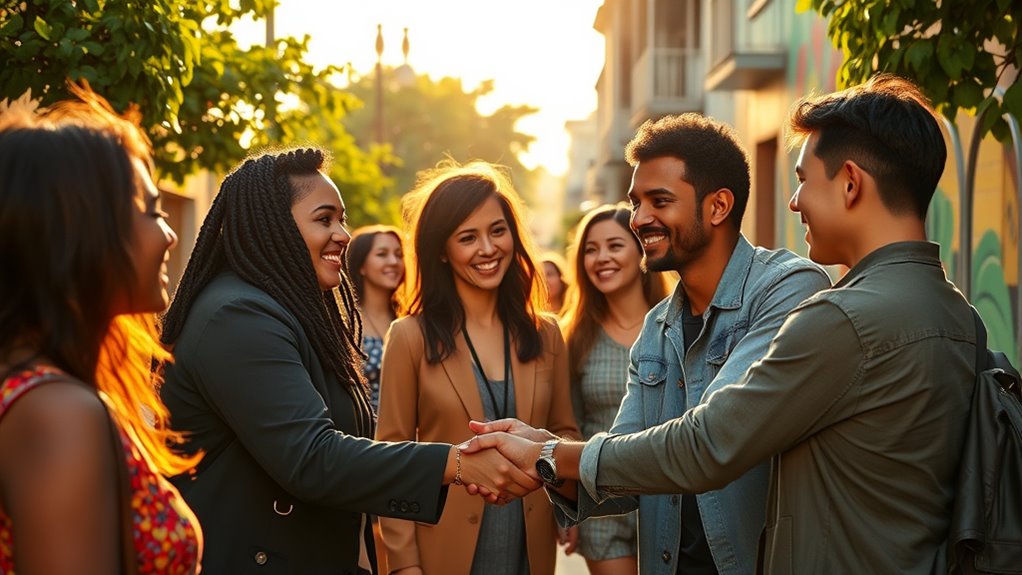
The science behind positive contagion reveals how emotions and behaviors can spread through social networks much like a virus. When you experience emotional contagion, your feelings are influenced by those around you, often without realizing it. If someone nearby is genuinely happy, you’re more likely to feel happier yourself. Social reinforcement plays a pivotal role here, as repeated exposure to positive emotions strengthens their impact. Your brain naturally mirrors others’ moods, making positivity contagious. This mirroring process is supported by mirror neuron activity, which facilitates empathy and emotional alignment. This process isn’t just about individual feelings; it influences group dynamics and overall well-being. Recognizing how emotional contagion works helps you understand that spreading kindness and positivity can ripple through your social circles, creating a powerful chain reaction that benefits everyone involved. Additionally, understanding the role of emotional contagion can empower you to intentionally foster a more positive environment in your personal and professional relationships, leveraging Social reinforcement to amplify these effects. By actively engaging in acts of kindness and maintaining a positive outlook, you can further enhance the spread of positivity within your community. Implementing positive feedback loops can accelerate this contagious effect, making kindness a self-sustaining cycle.
How Social Networks Amplify Kindness
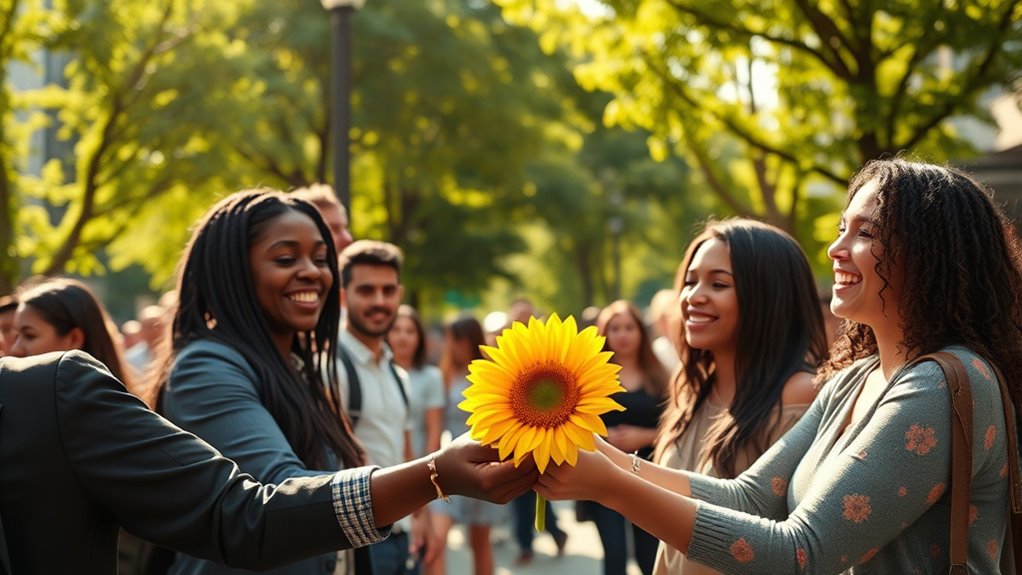
Social networks serve as powerful channels that amplify acts of kindness, turning small gestures into widespread movements. When you share stories of generosity online, it encourages others to act kindly in their offline interactions. Community engagement creates opportunities for collective kindness, inspiring participation from diverse groups. These events often highlight local acts of goodwill, motivating others to join in and extend their support. By connecting people beyond face-to-face encounters, social networks broaden the reach of kindness, making it contagious across communities. This digital amplification energizes offline interactions, turning simple acts into shared experiences that resonate widely. The viral nature of social media plays a crucial role in spreading kindness rapidly and effectively. Additionally, understanding the vibrational energy behind these acts can enhance their ripple effect, inspiring even greater generosity. Recognizing the importance of social influence can further amplify the spread of kindness, encouraging more individuals to participate. Moreover, employing auditory elements such as storytelling and soundscapes can significantly boost emotional engagement and the overall impact. Ultimately, social media and online platforms serve as catalysts, transforming individual acts of kindness into a powerful, collective force.
The Role of Emotional Resonance in Spreading Goodwill
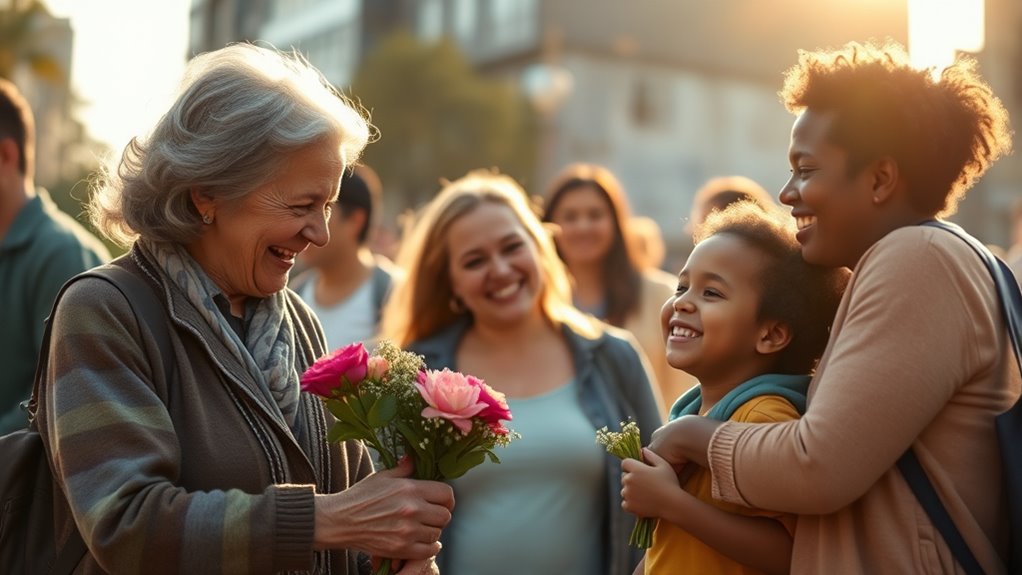
When acts of kindness resonate emotionally, they have a powerful ability to spread goodwill far beyond their initial moment. Emotional resonance occurs when you deeply connect with someone’s feelings, amplifying the impact of your kindness. This shared emotional experience acts as a catalyst for kindness contagion, inspiring others to respond with their own acts of compassion. When you witness genuine empathy or generosity, your emotional response encourages you to mirror that kindness, creating a ripple effect. This process strengthens social bonds and fosters a culture of positivity. Additionally, understanding personality traits can help tailor acts of kindness to resonate more effectively with others. Recognizing how emotional alignment influences interactions helps deepen connections and enhances the spread of goodwill. Engaging emotionally can also invoke Emotional resonance, which significantly amplifies the contagious nature of kindness, making it more likely to flourish within your social network. Furthermore, fostering social cohesion through shared positive experiences encourages a collective embrace of kindness. Building trust and safety within social groups ensures that acts of kindness are received with openness, further promoting a cycle of goodwill. By engaging emotionally, you not only feel more connected but also contribute to a cycle of goodness that spreads organically through your network, proving that heartfelt gestures can ignite widespread acts of kindness.
Digital Platforms and the Reach of Empathy
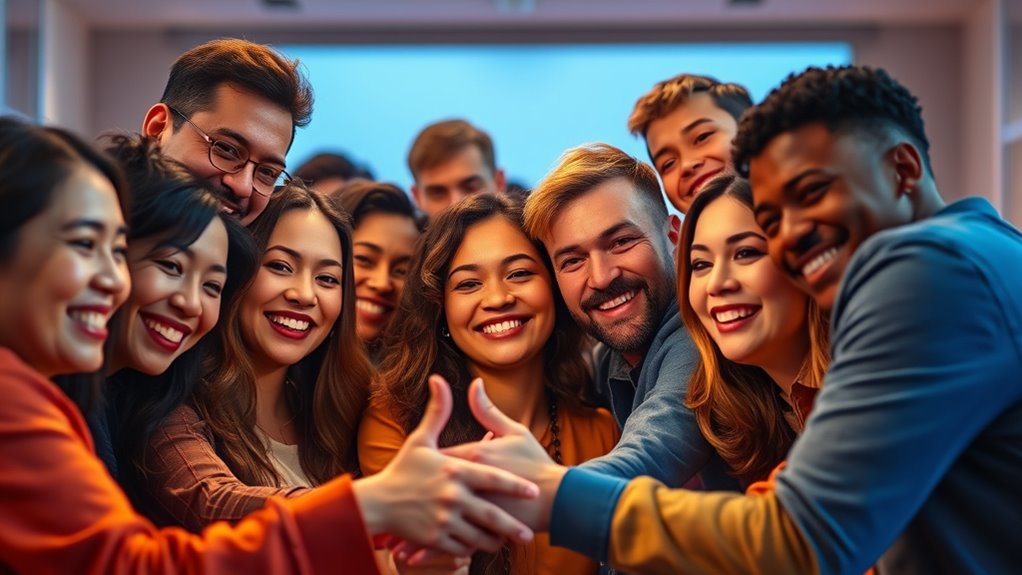
Digital platforms amplify empathy through viral campaigns that spread kindness quickly and widely. Social media connects people across distances, making it easier to share stories and support. These digital kindness movements show how online actions can create real-world compassion and positive change. Additionally, the spread of kindness is often facilitated by the fast dissemination of content, which encourages more people to participate and spread positivity. Moreover, AI-driven tools can help identify at-risk populations and tailor messages of support to maximize outreach and impact. Understanding the divorce process in various states highlights how legal and social systems can influence personal well-being and community stability. Incorporating tuning techniques from automotive modifications can also inspire innovative ways to enhance social engagement and community resilience.
Viral Empathy Campaigns
Viral empathy campaigns leverage the power of online platforms to spread compassion quickly and widely. You can see how they ignite community engagement by encouraging people to share stories, acts of kindness, and supportive messages. When you participate, your emotions can trigger emotional contagion, inspiring others to feel and act compassionately. These campaigns often use compelling visuals, hashtags, and calls to action that resonate with a broad audience. As your network engages, empathy spreads beyond individual interactions, creating a ripple effect across communities. The immediacy and accessibility of digital platforms amplify the reach of these campaigns, making kindness contagious. By harnessing the interconnectedness of social networks, viral empathy campaigns turn small acts into powerful movements for social good. Additionally, understanding the Mental Wellbeing Index can help tailor these campaigns to better address emotional stability and stress levels within communities, enhancing their effectiveness. Incorporating AI-driven insights can further optimize the impact of these initiatives by identifying key emotional triggers and engagement patterns.
Social Media Connections
Have you ever wondered how social media connects us to empathy on a global scale? It’s through viral hashtags that spread stories of kindness and understanding quickly across platforms. When you see a hashtag gaining traction, it often unites people around a shared cause, amplifying compassion. Influencer collaborations also play a key role—they leverage their reach to promote messages of empathy, inspiring millions to take action. These digital connections break down geographical barriers, making it easier to empathize with others’ experiences. As you engage with these campaigns, you help amplify positive messages, creating a ripple effect that extends beyond your immediate circle. Social media’s power lies in its ability to foster genuine connections and spread kindness rapidly, transforming online interactions into real-world empathy.
Digital Kindness Movements
When people come together on online platforms to promote kindness, they create powerful digital movements that extend empathy across the globe. Online anonymity allows individuals to share genuine acts of kindness without fear of judgment, encouraging more open and heartfelt interactions. These movements harness social media, forums, and virtual reality interactions to foster a sense of community and compassion. Virtual reality, in particular, offers immersive experiences that deepen understanding and empathy by allowing you to see the world from others’ perspectives. As a result, digital kindness movements can rapidly spread positive behaviors, inspiring others to join in and amplify the reach of empathy. This interconnected digital landscape proves that kindness, when shared online, has the potential to influence real-world change.
Case Studies of Viral Acts of Kindness
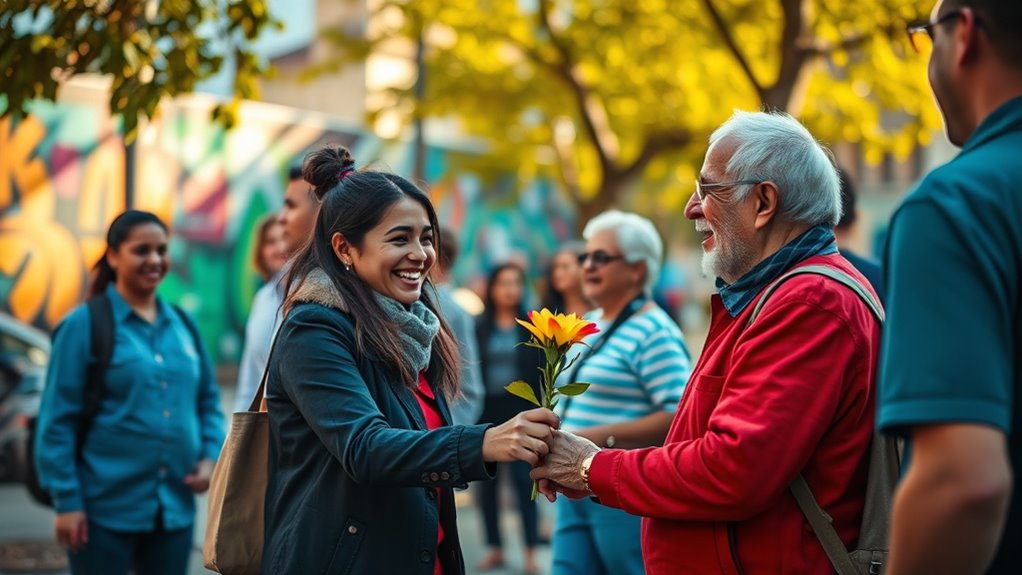
What makes certain acts of kindness spread so rapidly across communities and social media? Often, it’s because these acts resonate deeply, inspiring others to join in. For example, a viral community outreach project or charitable initiative can ignite widespread participation. Consider these key factors:
- Relatability – Acts that connect emotionally encourage sharing.
- Visibility – Publicizing acts amplifies their reach.
- Simplicity – Easy-to-replicate gestures motivate others to participate.
- Authenticity – Genuine actions foster trust and inspire replication.
These case studies demonstrate how small, sincere acts of kindness can snowball into powerful movements, creating waves of positive change. When you see such stories, it motivates you to act, knowing your contribution can spark broader community outreach efforts and charitable initiatives that truly make a difference.
The Psychology of Mirroring and Social Influence
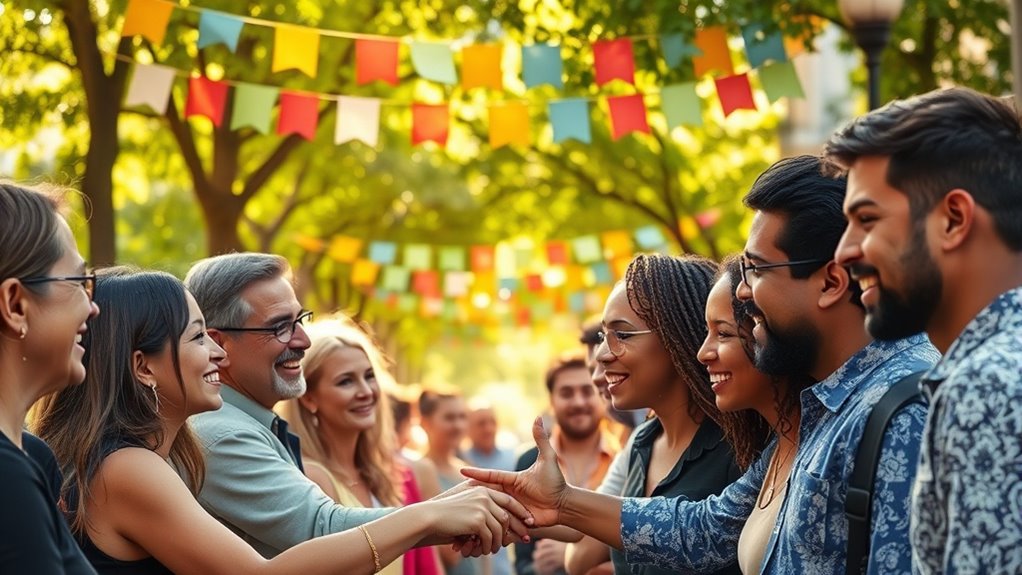
The rapid spread of acts of kindness often hinges on subtle psychological mechanisms that influence behavior and social dynamics. One key factor is mirror behavior, where you unconsciously imitate others’ actions, fostering connection and trust. Social mimicry plays a pivotal role, as when you observe someone’s kindness and subtly replicate their behavior, it encourages reciprocal acts. This automatic mirroring strengthens social bonds and amplifies positive energy within your network. When you see kindness in others, your tendency to mirror their behavior makes you more likely to respond with your own acts of generosity. This process creates a ripple effect, where social influence spreads kindness effortlessly, reinforcing the idea that kindness is contagious through simple, subconscious mimicry.
Strategies to Foster a Culture of Generosity
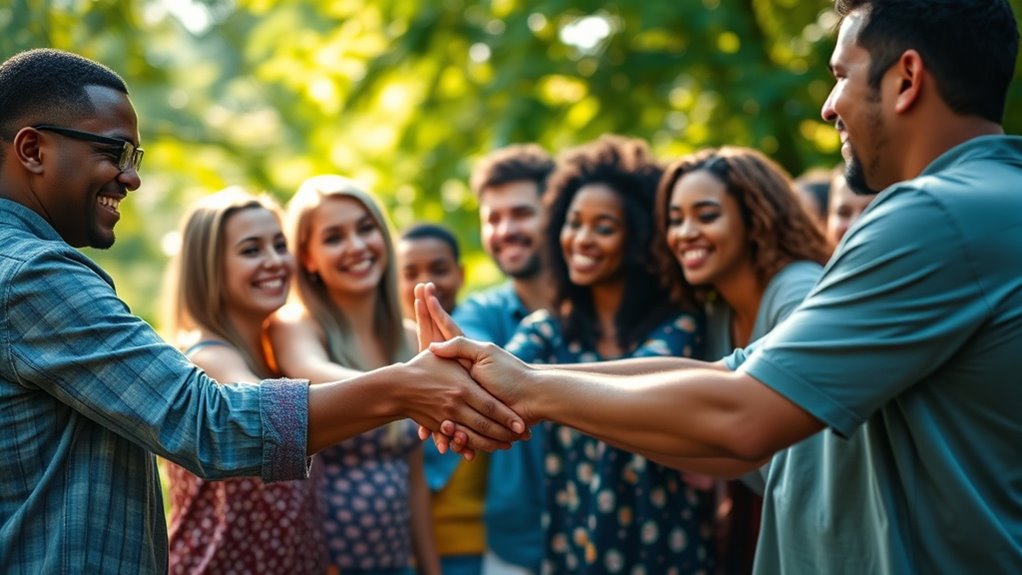
Creating a culture of generosity starts with intentional actions that encourage others to follow suit. You can promote community bonding by modeling mindful giving, demonstrating genuine concern and appreciation. To build this environment, consider these strategies:
- Encourage open conversations about giving, sharing stories that inspire others.
- Recognize and celebrate acts of kindness to reinforce positive behaviors.
- Facilitate group activities that foster shared experiences and community bonding.
- Provide opportunities for small, meaningful acts of generosity that anyone can participate in.
Challenges and Limitations in Spreading Positivity
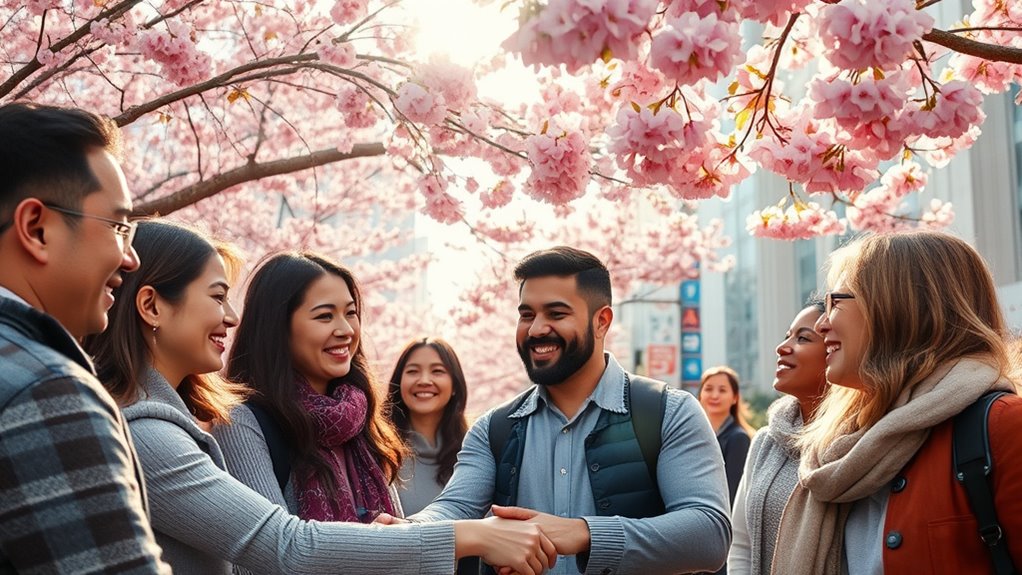
Spreading positivity can face significant hurdles, especially when individual or cultural barriers hinder genuine connection. Miscommunication barriers often lead to misunderstandings, making it difficult to share kindness effectively. When words are misinterpreted or tone is unclear, intentions can be lost, discouraging ongoing efforts. Cultural differences also pose challenges, as varying norms and values influence how kindness is perceived and expressed. What’s considered polite or generous in one culture might be misunderstood or overlooked in another. These disparities can create unintentional offense or apathy, stalling the spread of positivity. Overcoming these obstacles requires awareness, patience, and adaptability. Recognizing and respecting diverse perspectives helps bridge gaps, but it’s essential to remain mindful of these limitations to sustain genuine and inclusive kindness across social networks.
Practical Steps to Initiate a Kindness Chain Reaction
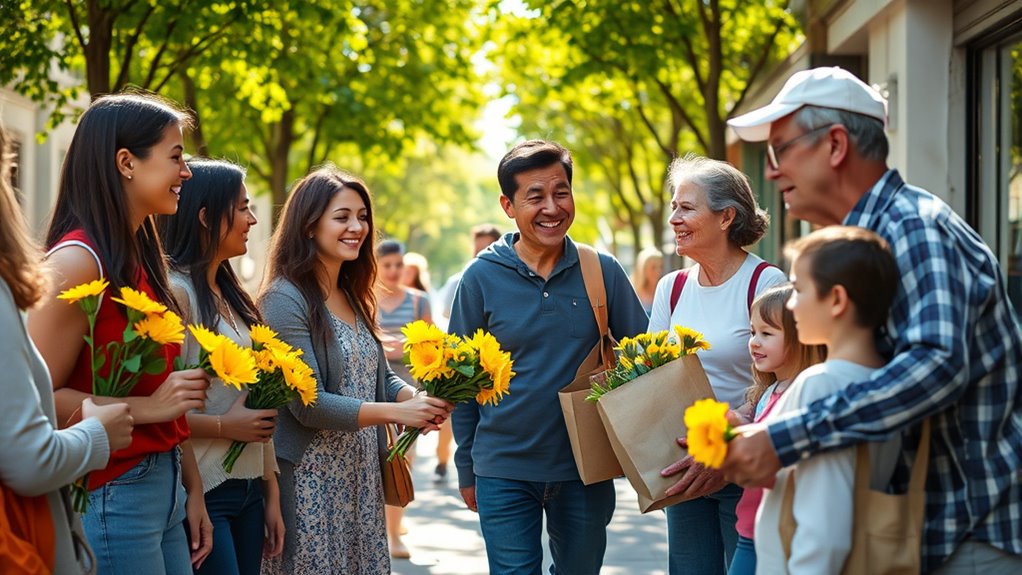
You can start a kindness chain reaction by performing small acts of generosity that are easy to do and meaningful. Sharing inspiring stories encourages others to join in and spread positivity. When you invite others to participate, you create a ripple effect that amplifies kindness across your community.
Start Small Acts
Starting with small acts of kindness can spark a powerful chain reaction that touches many lives. Simple, intentional gestures create ripples that inspire others to do the same. To begin, consider these practical steps:
- Perform random acts of kindness, like paying for someone’s coffee or leaving a kind note.
- Engage in small gestures, such as holding the door or offering a genuine compliment.
- Share a smile or kind word with a stranger, encouraging positivity in everyday interactions.
- Volunteer a few minutes of your time to help someone in need, demonstrating that small efforts matter.
These small gestures may seem minor, but they can ignite a contagious spirit of kindness, encouraging others to follow suit and perpetuate the cycle.
Share Inspiring Stories
Sharing inspiring stories of kindness can motivate others to act and create their own ripple effects. Personal storytelling highlights real acts of compassion, encouraging community engagement and fostering connection. When you share these stories, you demonstrate how small gestures can spark larger movements. To make your stories impactful, consider the following:
| Act of Kindness | Who Was Involved | Outcome |
|---|---|---|
| Helping a neighbor | Community member | Built trust and friendship |
| Donating clothes | Local charity | Supported families in need |
| Volunteering at a shelter | Volunteers & clients | Brought hope and comfort |
| Organizing a cleanup | Residents | Improved neighborhood environment |
Encourage Others’ Kindness
Encouraging others to practice kindness begins with taking intentional, small actions that inspire those around you. By performing random acts and expressing genuine gratitude, you set a positive example that motivates others to follow suit. To initiate a kindness chain reaction, try these steps:
- Share a spontaneous act of kindness, like holding the door or complimenting someone.
- Express heartfelt gratitude to a colleague or friend, encouraging them to do the same.
- Prompt others to carry out their own random acts, creating a ripple effect.
- Recognize and celebrate acts of kindness publicly, reinforcing the importance of kindness in your community.
These actions cultivate an environment where kindness naturally spreads, making positivity contagious.
Frequently Asked Questions
Can Positive Contagion Have Long-Term Impacts on Mental Health?
Positive contagion can markedly impact your mental health over the long term by promoting resilience and emotional stability. When you experience kindness, it often encourages you to adopt a similar attitude, creating a ripple effect. This ongoing cycle helps build your capacity to handle stress and setbacks, strengthening your emotional well-being. By regularly engaging in positive interactions, you can foster lasting mental health benefits, making you more resilient in facing life’s challenges.
How Do Cultural Differences Influence Kindness Propagation?
Imagine kindness as a gentle river that flows differently across landscapes. Your cultural norms shape this flow, influencing how kindness is shared and received. In some cultures, social perceptions make kindness a communal treasure, easily shared and celebrated. In others, it’s a more reserved dance. These differences determine how kindness propagates, creating unique ripples that either energize or slow its spread across social networks.
Are There Specific Social Media Algorithms That Promote Kindness More?
You might wonder if social media algorithms promote kindness more. Some algorithms, driven by engagement metrics, favor positive content, indirectly boosting kindness. However, algorithm bias can also hinder this, as negative or sensational posts often attract more attention. While certain platforms adjust their algorithms to highlight supportive interactions, it’s not a guaranteed focus on kindness. Being aware of these biases helps you understand how kindness can be encouraged or overlooked online.
What Role Do Influencers Play in Spreading Positive Behaviors?
Think of influencers as gardeners planting seeds of change. They hold a lot of influencer responsibility, shaping how their followers perceive kindness. When influencers focus on authentic engagement, they inspire genuine positive behaviors that ripple outward. By sharing heartfelt stories and acting with integrity, they can turn their platforms into fertile ground for kindness to grow, making social networks more supportive and uplifting communities.
How Can Workplaces Cultivate a Sustained Culture of Kindness?
To cultivate a sustained culture of kindness, you should prioritize employee recognition and team building activities. Recognize and celebrate acts of kindness regularly to reinforce positive behaviors. Organize engaging team activities that foster trust and collaboration, creating an environment where kindness becomes part of daily interactions. By consistently highlighting kindness and encouraging teamwork, you help embed a culture that values and sustains positivity over time.
Conclusion
As you gently nurture kindness around you, you’ll notice it softly weaving through your social fabric, creating a warm and inviting space for others to follow. By embracing simple acts and sharing genuine empathy, you help cultivate a ripple effect that uplifts everyone involved. Remember, your small gestures can quietly spark a wave of goodwill, transforming your community into a brighter, more connected place where positivity flows effortlessly and naturally.
